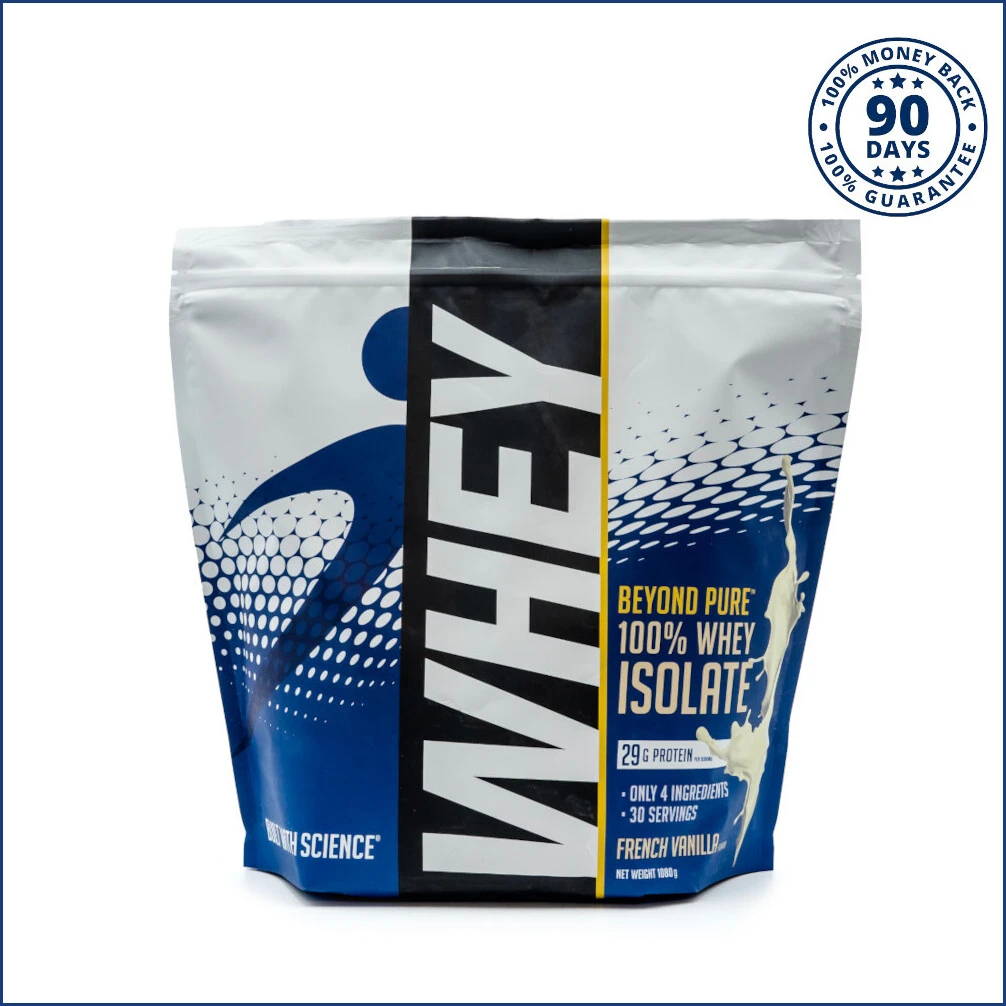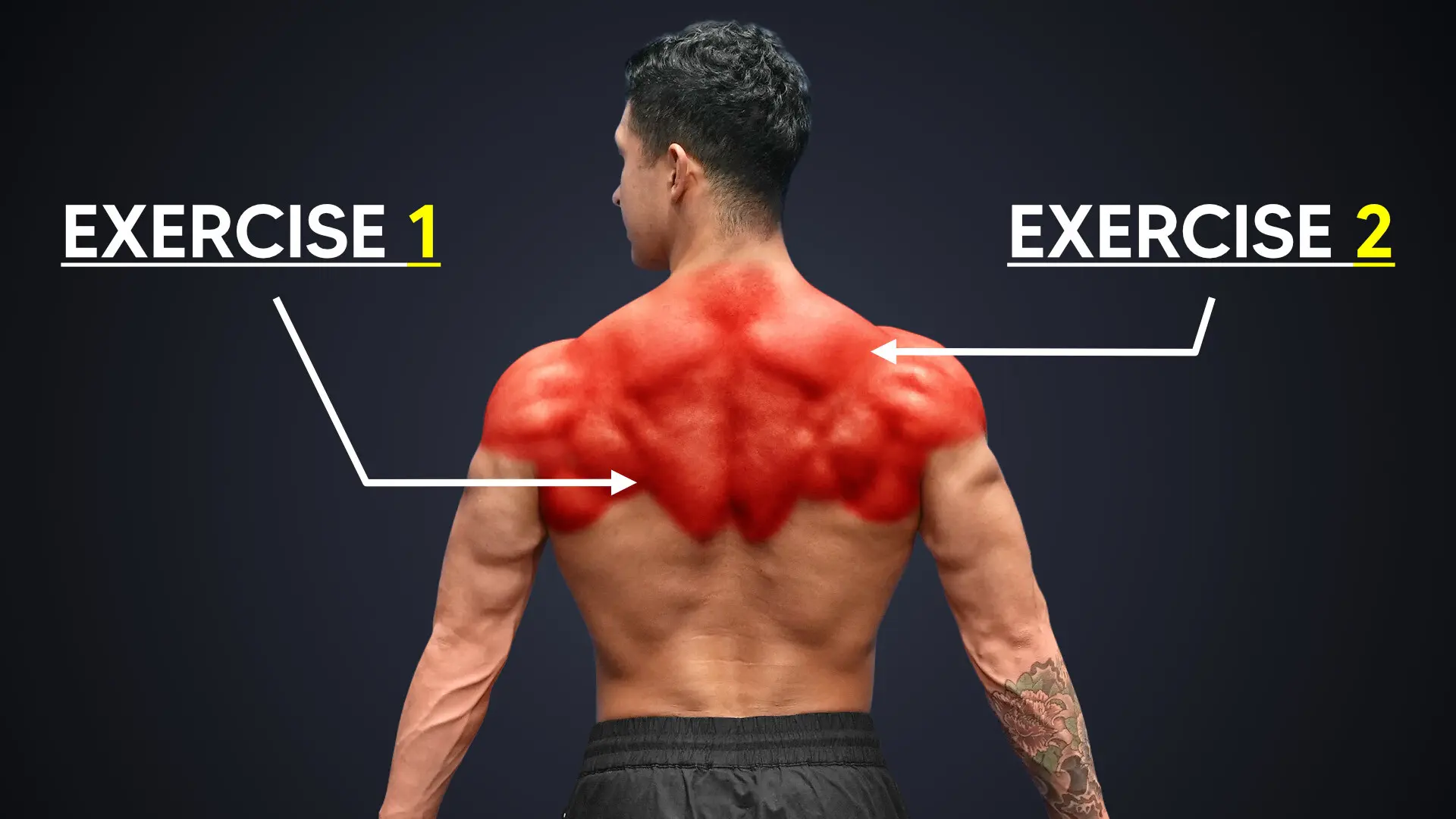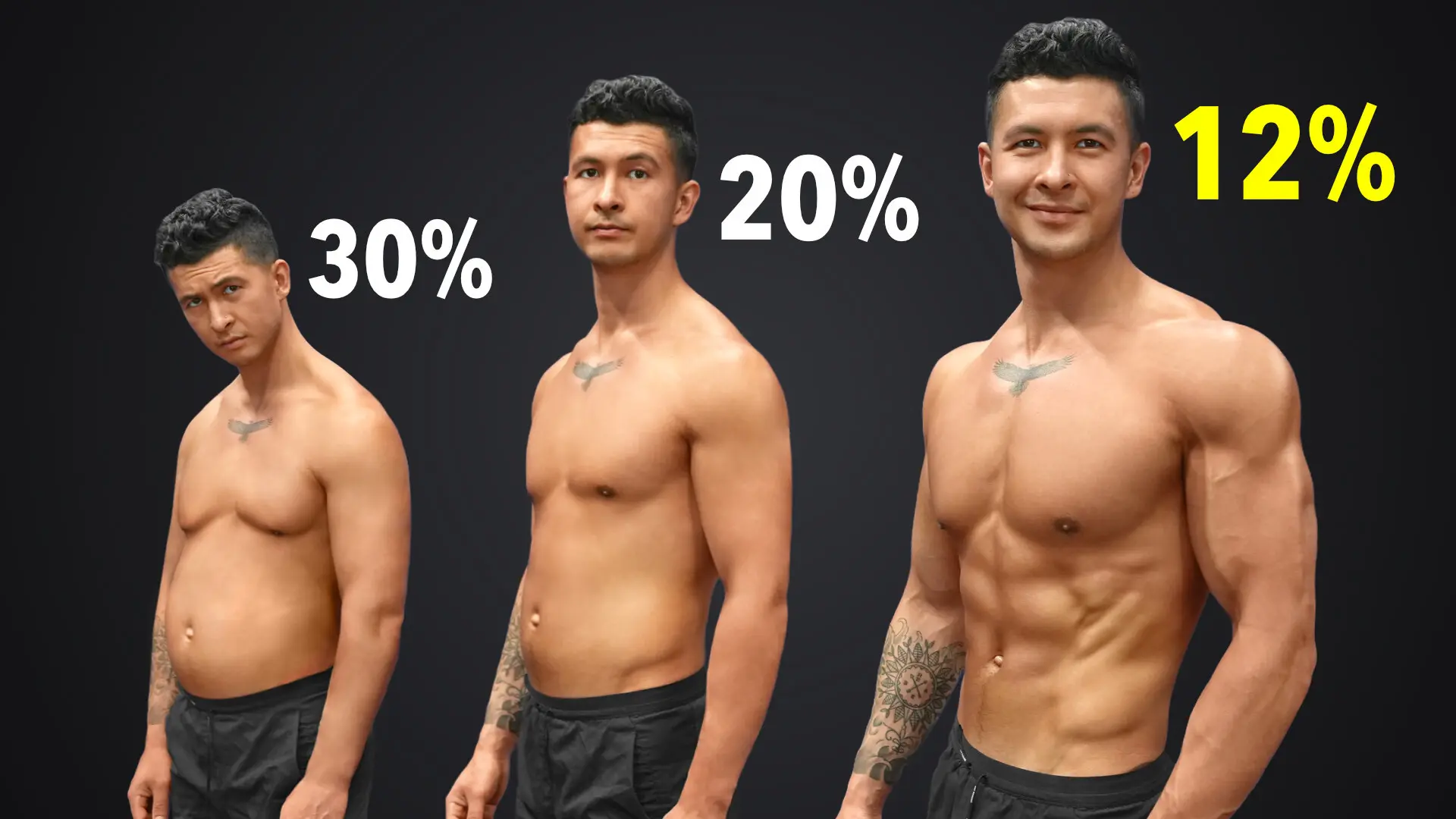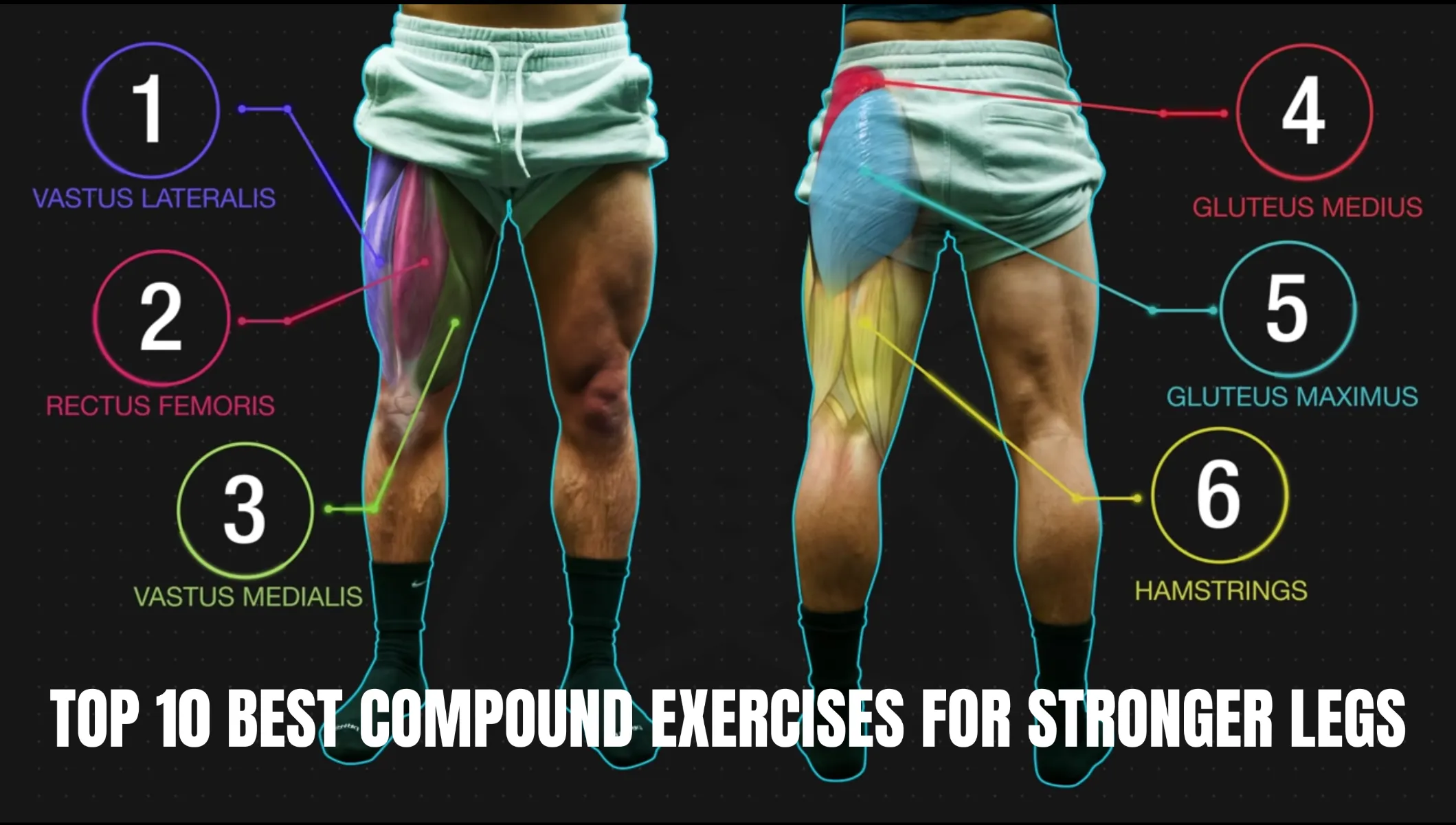
The Top 10 Best Compound Exercises For Stronger Legs | Ultimate Guide
Best Compound Exercises For Legs
Think about the number of major muscle groups in your legs.
You have the quads, hamstrings, glutes, and (the regrettably often overlooked) calves. And that’s not even counting the individual muscles within those major muscle groups:
- Quads: 4 muscles (rectus femoris, vastus lateralis, vastus medialis, and vastus intermedius)
- Hamstrings: 3 muscles (semitendinosus, semimembranosus, and biceps femoris)
- Glutes: 3 muscles (gluteus maximus, gluteus minimus, and gluteus medius)
- Calves: 2 muscles (gastrocnemius and soleus)
That’s 12 individual muscles in total!
It would be very difficult to use only isolation exercises to target and grow each of those muscles in your workouts.
Even if, on the off chance you could … you'd be spending a large chunk of your day in the gym and potentially sacrificing the growth of other muscle groups.
So, thankfully, we have compound exercises.
These multi-joint movements work multiple muscle groups — saving you precious time (that said, they’re not without their downsides, but more on that later).
Top 10 Best Compound Exercises For Legs
For now, let’s talk about the top 10 compound exercises for legs. More specifically, for each exercise, I’ll share:
- Which individual muscle groups of the legs it targets
- Crucial form and technique tips that’ll help you maximize gains while minimizing injury risk
- Exercise variations and modifications for differing lifting experience, mobility limitations, and injury history
#1: Barbell Squats
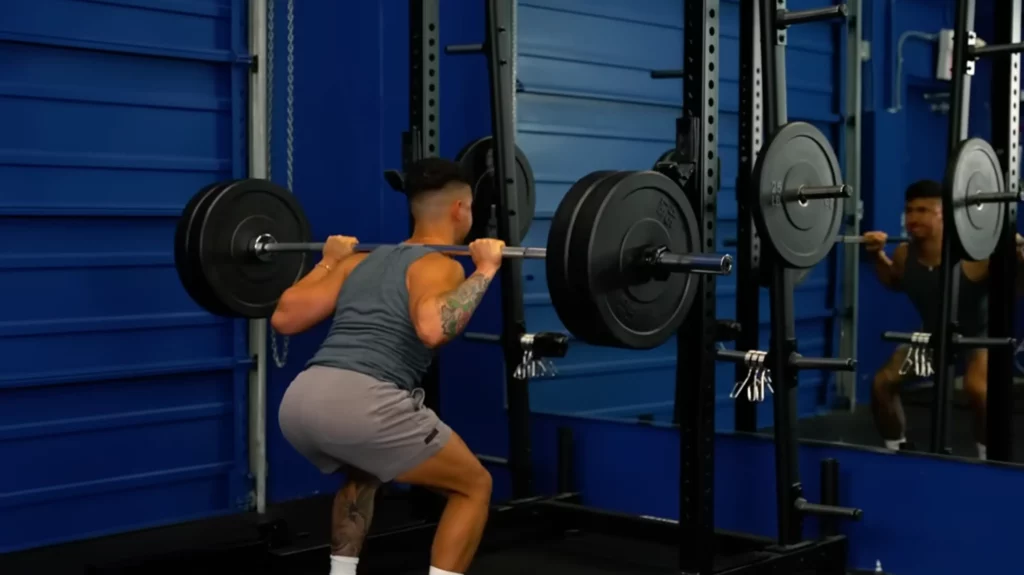
Equipment needed: Barbell and squat rack
Preferentially targets:
Quads
- Vastus lateralis
- Vastus medialis
- Vastus intermedius
Glutes
- Gluteus maximus
Why this exercise?
Look at every “best leg workout” I’ve come up with, and you’ll definitely spot the barbell back squat.
It’s an excellent exercise that’ll target your quads and glutes.
Now, note that the pattern of muscular activation and, thus, resulting muscle growth on the squats can vary according to your squatting form.
Depending on your anatomy and bar placement (i.e., high vs. low bar), you may squat with a more upright or forward-leaning torso. The more upright your torso, the more forward your shin angle (i.e., more knee flexion) — and this preferentially involves your quads compared to the glutes.
The opposite holds.
The more your torso leans forward, the more you’d involve the glutes compared to the quads.
However, this doesn't mean you should force yourself to squat with a torso angle you're uncomfortable with to prioritize your quads or glutes. Instead, you should stick with a torso angle that fits your anatomy and preferences.
Need help with that? Click here to learn how to perform the barbell squat properly.
As for how deep you should go on the exercise? My answer is as deep as possible (research shows this maximizes hypertrophy) without sacrificing proper squat form.
Exercise variations and modifications
The barbell back squat can be a challenging exercise. Here are a few alternatives to consider if you …
- Are new to the squatting motion: Dumbbell goblet squat
- Struggle with shoulder mobility: Safety bar squat
- Have limited ankle mobility: Elevate your heels (e.g., with elevated-heel shoes or placing weight plates under your heels)
- Want more stability: Smith machine squat, landmine squat, and leg press (we cover this in more detail in a bit)
By the way: if you lack mobility, the only way you can eventually safely progress to barbell back squats is if you actually work on — and improve — your problem areas. So you should see the modifications listed above as stopgap measures.
Psst: here’s a full-body mobility routine you could easily tailor to your needs.
#2: Deadlifts
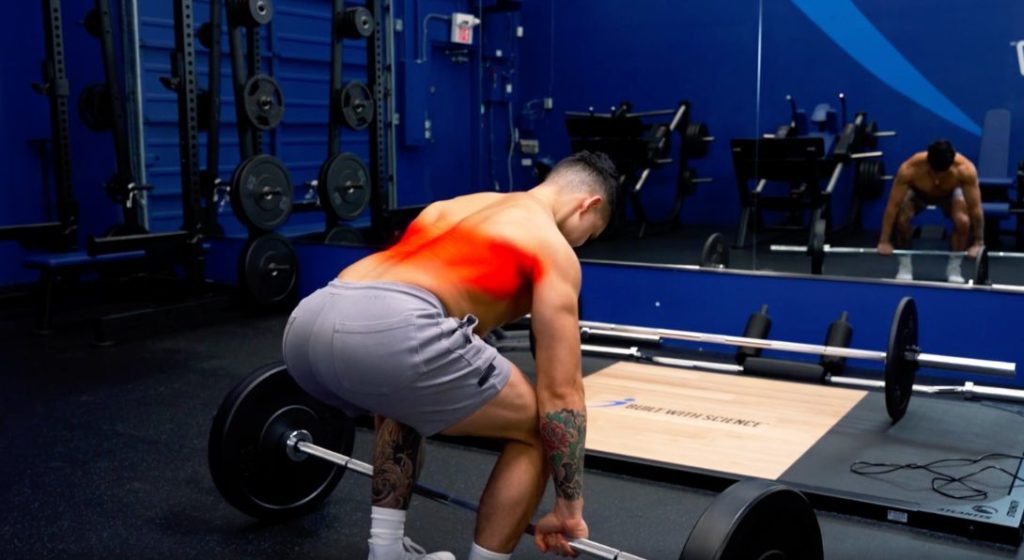
Equipment needed: Barbell and ideally Olympic/bumper plates
Preferentially targets:
Hamstrings
- Biceps femoris
- Semimembranosus
Glutes
- Gluteus maximus
Why this exercise?
Your hamstrings and glutes help with hip extension: the deadlift’s exact movement pattern.
While the deadlift is undoubtedly one of the best compound exercises for legs around, many people also tend to run into lower back injuries with it — highlighting the importance of learning how to deadlift with safe and proper form.
While you should definitely check out my past article on proper (conventional) deadlifting form, the following 5 steps can help get you started on refining your technique:
- Stand with your feet hip-width apart and the bar over your mid-foot.
- Make a fist and punch your hands down to the floor to activate your lats. Then, push your hips back and bend your knees until you can reach the bar. Grab it just outside your knees.
- Before lifting the bar, drive your knees against your arms, take a deep 360 breath, and brace your core. Extend your chest to flatten your back, then squeeze your armpits to activate your lats.
- Push down with your feet until the bar passes your knees, then thrust your hips forward to finish the lift.
- Control the weight as you lower it by pushing your hips back and sliding the bar as close as possible along your thighs. Once the bar passes your kneecaps, bend your knees and slide it along your shins to return it to the starting position.
Exercise variations and modifications
Here are a few alternatives to consider if you …
- Have a history of lower back injuries: Trap bar deadlift
- Don’t want to use weights: Back extensions
- Want more stability: Smith machine deadlift
#3: Hamstrings-Focused Romanian Deadlifts
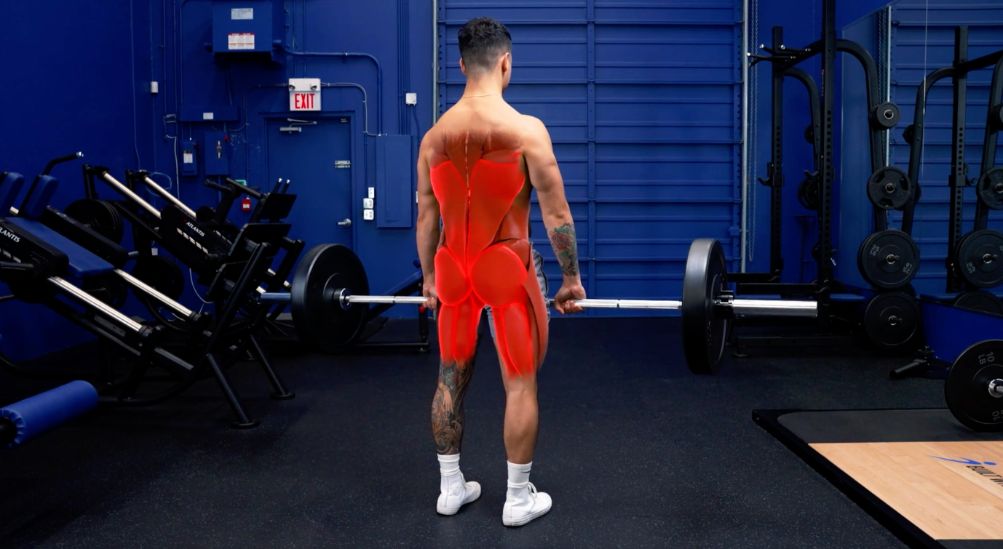
Equipment needed: Barbell
Preferentially targets:
Hamstrings
- Biceps femoris
- Semimembranosus
Glutes
- Gluteus maximus
Why this exercise?
Compared to the deadlifts, the Romanian deadlift will have you hinging more at the hips. This is likely to increase the activation of your glutes and hamstrings.
Also, there is some evidence (e.g., this and this) that increasing time under tension with exercises using long muscle lengths — exactly what you'd see with the Romanian deadlifts — may enhance muscle growth.
This doesn't mean you should slow down your eccentrics excessively.
A 2015 review published in Sports Medicine suggests that training at very slow durations (more than 10 seconds per repetition) is inferior from a hypertrophy standpoint.
So, your best bet is to focus on lowering the weight in a controlled manner instead of simply letting gravity do the work for you or dragging out the rep until it's excruciatingly slow.
And to emphasize your hamstrings a little more over your glutes, you could keep your legs relatively straight throughout each rep (i.e., try not to let your knees bend; doing so shifts the load to your glutes instead).
Exercise variations and modifications
Here are a few alternatives to consider if you …
- Have a history of back injury: Smith machine Romanian deadlift
- Want variety: Good mornings and kettlebell swings
#4: Glute Ham Raises
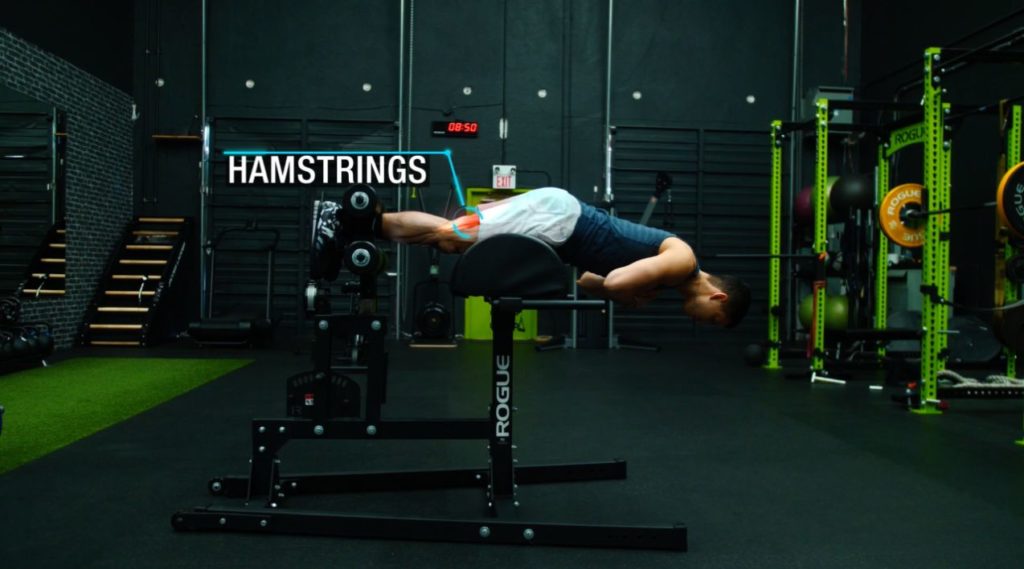
Equipment needed: Glute ham developer (GHD) machine
Preferentially targets:
Hamstrings
- Semitendinosus
Glutes
- Gluteus maximus
Why this exercise?
As a bi-articulate muscle, the hamstrings cross 2 joints: the hips and the knees.
This means you'd likely need a mix of hip extension and knee flexion exercises to grow the hamstrings optimally. Research agrees:
- Hip extension-based exercises seem to specifically activate the biceps femoris and semimembranosus over the semitendinosus, while
- Knee flexion-based exercises seem to involve the semitendinosus more (than the biceps femoris and semimembranosus)
Previously, we've covered one of the best hip extension-based compound exercises for the legs, the deadlifts.
So, now, to create a leg workout routine for well-rounded hamstrings development, we'd need the glute ham raises — which, as its name suggests, also activates the glutes very well.
The glute ham raises can be tricky to get right, so here's a cue that may help.
Maintain a straight line through your knee, hip, shoulder, and neck throughout the movement. Do not hyperextend through the lumbar spine.
Exercise variations and modifications
Here are a few alternatives to consider if you …
- Want variety: Nordic curl
- Need an easier variation: Seated leg curl (this is technically an isolation exercise, but mentioned because it’s often considered more “do-able” since it allows you to use “lighter” weights than your body weight, which is what you’d experience on the glute ham raise and Nordic curl; also, the seated leg curl gives you a deeper stretch than the lying alternative — potentially offering you more gains)
#5: Lunges
Equipment needed: Dumbbells
Preferentially targets:
Quads
- Vastus lateralis
- Vastus medialis
- Vastus intermedius
Glutes
- Gluteus maximus
Why this exercise?
While lunges are fantastic at targeting your quads and glutes, you can choose to emphasize one over the other by (as mentioned under barbell back squats) tweaking the angles of your shin and torso.
So, a quick recap — when performing the lunges with:
- An upright torso and more knee flexion: You’ll emphasize the quads more (than the glutes)
- A forward-leaning torso and relatively vertical shin: You’ll emphasize the glutes more (than the quads)
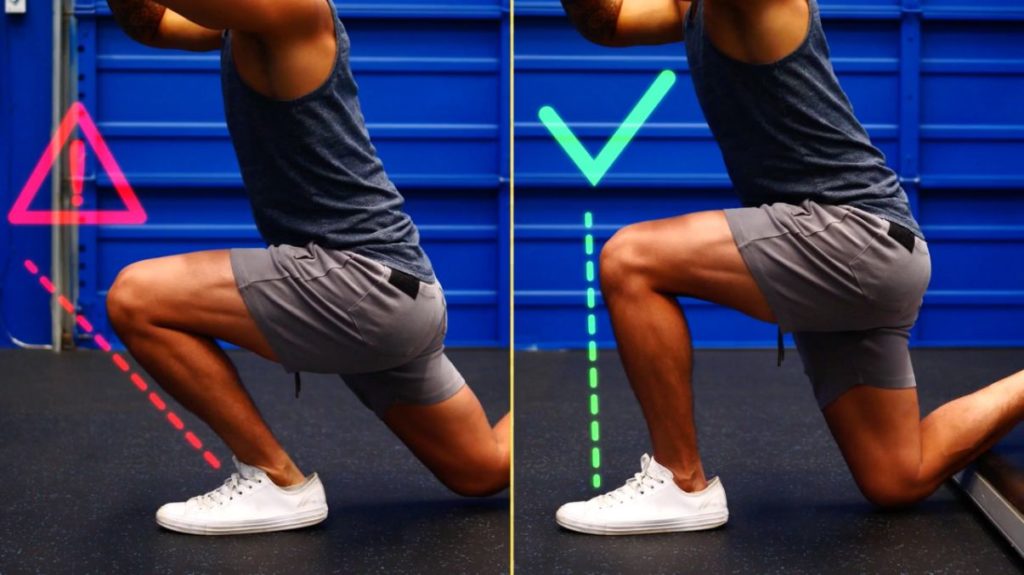
Also, because lunges work one leg at a time (i.e., it’s a unilateral exercise), they could help prevent strength and muscular imbalances.
If you're new to the movement, you could start with just your body weight, then progressive overload with dumbbells once you’re ready.
Exercise variations and modifications
Here are a few alternatives to consider if you …
- Have difficulties balancing: Split squat and step-ups (we cover these in more detail in a bit)
- Want variety: Prowler push and prowler drag
#6: Leg Press
Equipment needed: Leg press machine
Preferentially targets:
Quads
- Vastus lateralis
- Vastus medialis
- Vastus intermedius
Glutes
- Gluteus maximus
Why this exercise?
If you cannot or prefer not to squat, the leg press is one of the best machine-based compound leg exercises that closely mimics the barbell back squat's movement pattern.
That said, note that you could choose to preferentially target either your quads or glutes by playing around with your feet positioning. Placing your feet higher shifts the load to your glutes. While shifting your feet lower emphasizes your quads.
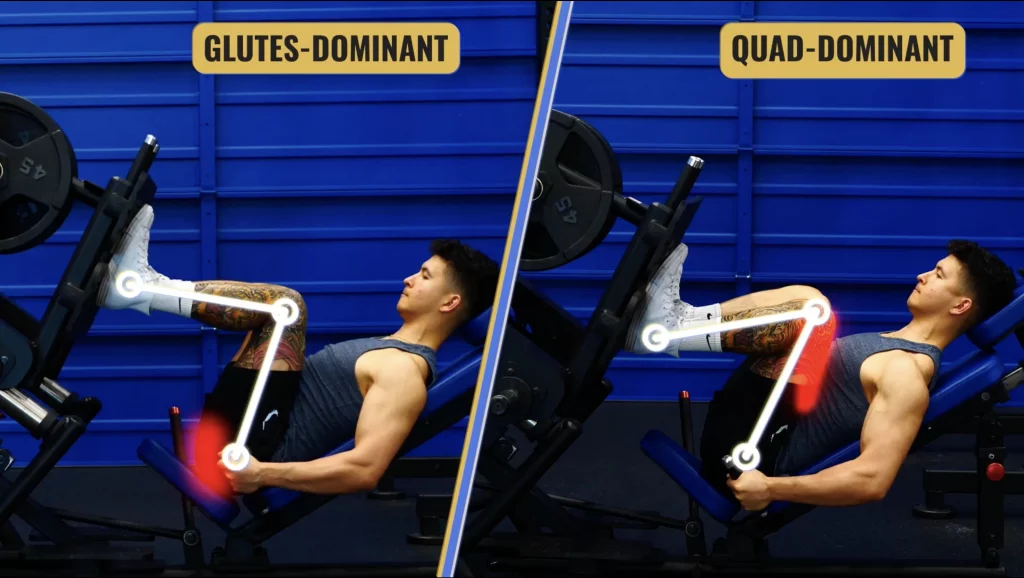
And if you're wondering how it fares on the muscle growth front compared to the "traditional" barbell back squat, let's look at a 2018 study published in The Journal of Sports Medicine and Physical Fitness.
The researchers randomly assigned participants to 3 groups:
- Leg press training only
- Squat training only
- Leg press and squat training
After 10 weeks of performing 2 lower body workouts weekly (note: 6 sets per session at loads corresponding to 8 to 12 repetition maximum with 90- to 120-second rest intervals), the researchers failed to find any significant differences in fat-free mass changes between the 3 groups.
This aligns with the findings of a 2021 meta-analysis published in The Journal of Sports Medicine and Physical Fitness.
More specifically, the researchers concluded that you’d see similar muscle growth between machine-based and free-weight training when sets and reps are equated.
Meaning? You don't have to worry about leaving gains on the table by choosing the leg press over the barbell back squat.
Exercise variations and modifications
Here are a few alternatives to consider if you …
- Want variety: Hack squat, V-squat, and belt squat
#7: Step-Ups
Equipment needed: Step platform or plyometric box and dumbbells
Preferentially targets:
Quads
- Vastus lateralis
- Vastus medialis
- Vastus intermedius
Glutes
- Gluteus maximus
Why this exercise?
If you're struggling to keep your balance during lunges and split squats, step-ups are a great regression exercise (also a unilateral movement) you could use to strengthen your quads and glutes.
But just because it's technically "easier" doesn't mean you can overlook proper form and technique. So here are a few tips to get the most out of the exercise:
- Step on something low if you're new to the exercise, then work up to something higher (note: the higher the height, the more the load shifts to the glutes compared to the quads).
- Focus on driving off solely from your front leg.
- Squeeze your glutes to finish the movement — the same glute squeeze you'd use to finish a squat or deadlift — and don’t put your back leg on the platform or box. Don’t finish hunched over.
- Use a slow, controlled eccentric when coming off the top of the platform or box.
Exercise variations and modifications
Here are a few alternatives to consider if you …
- Want variety: Stair climber
#8: Bulgarian Split Squats
Equipment needed: Bench and dumbbells
Preferentially targets:
Quads
- Vastus lateralis
- Vastus medialis
- Vastus intermedius
Glutes
- Gluteus maximus
- Gluteus minimus
Why this exercise?
Bulgarian split squats are one of the best glute exercises because they stretch your glutes at the bottom even more than regular lunges.
And that’s important … how?
As it turns out, more studies are finding that training at longer muscle lengths (i.e., when the muscle is in a stretched position) tends to build more muscle than training at shorter muscle lengths.
If you’d like to learn why and what it means for how you should train the rest of your muscle groups — and not just your lower body — for the most gains possible, check out this past article I wrote on stretch-mediated hypertrophy.
In the meantime, though, here’s a crucial form tip for the Bulgarian split squats.
Maintain a neutral back by bending over slightly at your hip (instead of rounding your back) throughout the movement.
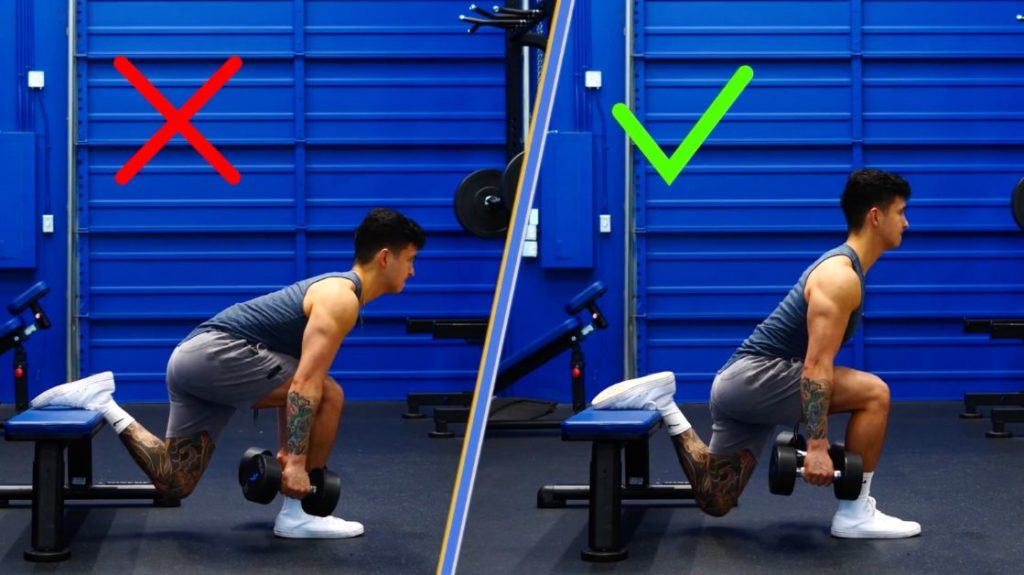
And, as mentioned under lunges and leg press, you could preferentially target your:
- Glutes: By maintaining a slight forward lean in your torso and vertical shin angle
- Quads: By maintaining a more upright torso and forward shin angle
… while performing the Bulgarian split squats.
Exercise variations and modifications
Here are a few alternatives to consider if you …
- Are looking for a regression exercise: Split squat, lunges, and heel elevated split squat
- Want variety: Smith machine Bulgarian split squat
#9: Hip Thrust
Equipment needed: Barbell and a barbell pad or a hip thrust machine
Preferentially targets:
Glutes
- Gluteus maximus
- Gluteus minimus
Why this exercise?
Squats and lunges are great at working the glutes; they provide the most tension on the glutes when they're in a fully stretched position.
But here’s the thing.
If you wish to maximize your glute development, research suggests that you'll need to add thrust/bridge exercises that help provide the most tension to your glutes when they're in the fully contracted position.
Which is where the weighted hip thrusts come into play.
FYI, in this past article where we tested 17 of the most popular glute exercises, we found that the barbell hip thrust actually led to the highest glute activation overall.
No matter which lifting strategy you use (the PPT method or the hinge method), in general, you’d want:
- A horizontal torso at lockout
- To squeeze your glutes hard so you achieve neutral or posterior tilted hips
- Vertical shins at the top
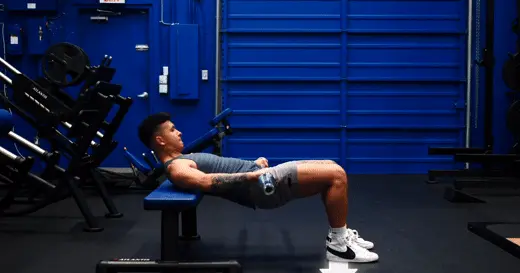
Exercise variations and modifications
Here are a few alternatives to consider if you …
- Don’t have access to equipment: Single-leg hip thrust
- Are looking for a regression: Glute bridge and hyperextension
#10: Calf Raises
Equipment needed: Dumbbells, calf raises machine, or the leg press machine
Preferentially targets:
Calves
- Gastrocnemius
- Soleus
Why this exercise?
First, a disclaimer: the calf raise is not a compound exercise.
Um, why is it here? Well, that's because there aren't any compound leg exercises that meaningfully target the calves, so I've chosen to include calf raises in this list.
Contrary to popular belief, you don't necessarily need to use super light weights and high reps to grow your calves optimally. According to a 2020 study published in Physiology Reports, heavy (6 to 10 repetition maximum) and light (20 to 30 repetition maximum) calf training led to similar growth in the soleus and both heads of the gastrocnemius.
This means you can stick with training in the rep range you prefer. Just make sure you’re still training close to failure!
You may also wish to mix seated and standing calf raises for well-rounded calves development.
Exercise variations and modifications
Here are a few alternatives to consider if you …
- Want variety: Walking calf raises
Sample leg workout routines
Here are 2 ways you could put those exercises together for your leg workout in the gym.
Workout A
#1: Barbell Squats (3 sets, 6 to 8 reps)
#2: Romanian Deadlifts (3 sets, 8 to 12 reps)
#3: Hip Thrust (3 sets, 8 to 12 reps)
Workout B
#1: Deadlifts (3 sets, 6 to 8 reps)
#2: Leg Press (3 sets, 8 to 12 reps)
#3: Bulgarian Split Squats (3 sets, 6 to 8 reps per leg)
Conclusion
Remember when I said that compound exercises aren’t without their downsides?
In addition to a lack of compound exercises for legs that optimally target the calves, you'll also find that there aren't any that are great for the rectus femoris (part of the quad muscle) and gluteus medius (part of the glutes).
For those, you'll need isolation exercises.
But which isolation exercises? And how should you best incorporate them into your training routine to complement your compound exercises for legs and result in more growth (instead of *gasp* less)?
Well, if you're interested in a step-by-step, science-based training program that shows you the exact exercises that'll transform your physique — yep, not just your legs! — then take my free analysis quiz below to find the best program for you and your body:
Click the button below to take my analysis quiz to discover the best program for you:
↓

